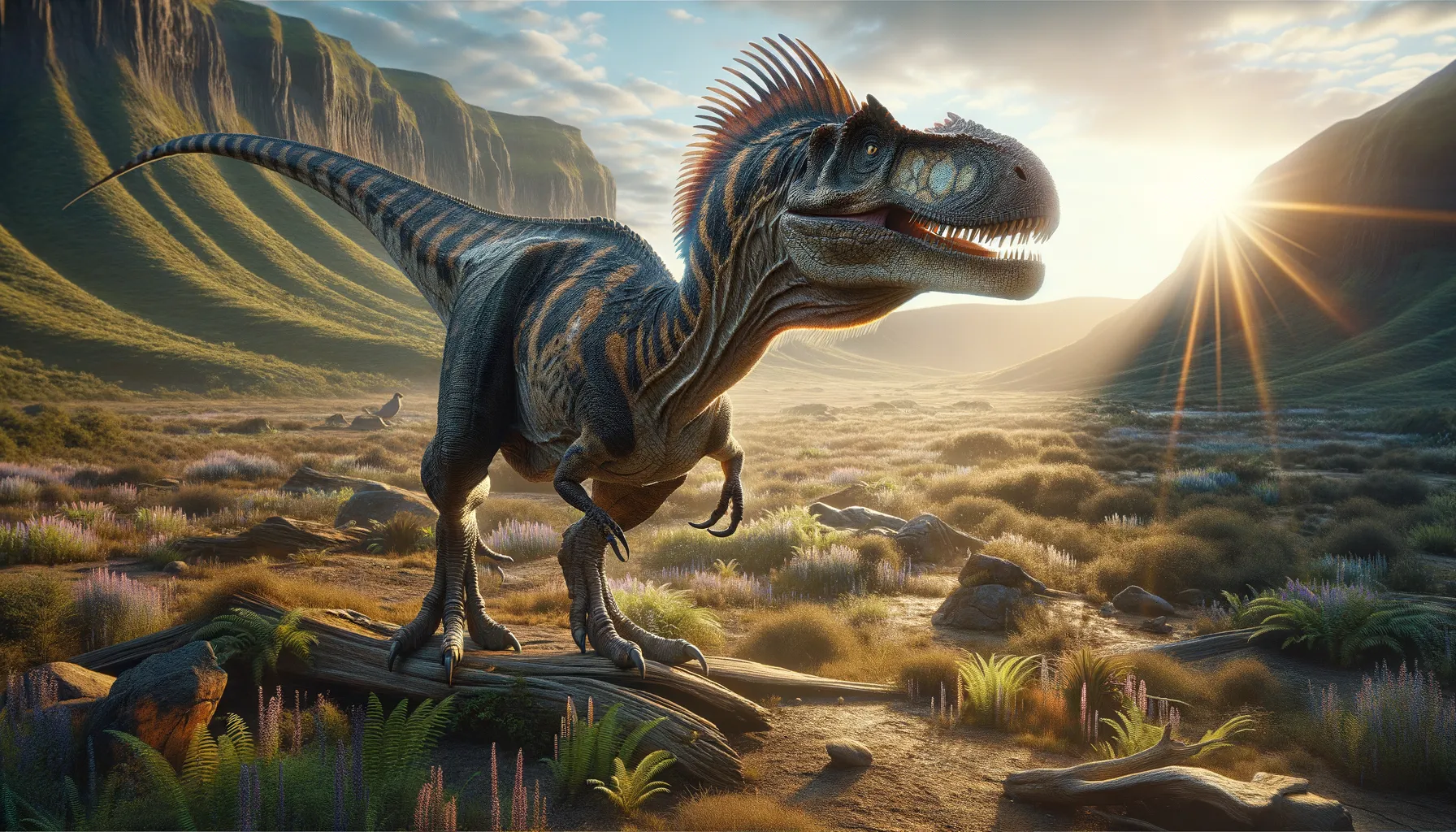
Segnosaurus
The clawed giant of the ancient landscape.
Period
Cretaceous
Length
Approximately 6 to 7 meters long.
Height
Around 2.5 to 3 meters tall when standing upright.
Weight
Estimated to weigh around 900 kilograms.
Segnosaurus was a unique theropod dinosaur known for its unusual features and slow-moving nature. It lived during the Cretaceous period and is primarily known from fossil evidence found in Mongolia. This dinosaur is noted for its long, claw-like fingers and herbivorous diet, despite being part of a typically carnivorous group. Segnosaurus played a significant role in understanding the evolution from theropod dinosaurs to modern birds, highlighting the diversity and adaptability of dinosaur species.
Diet
Segnosaurus was likely herbivorous, feeding on a variety of plants. Its large claws possibly helped in gathering or foraging for foliage. Some theories suggest it might have been omnivorous, occasionally consuming small animals as well.
Hunting
Segnosaurus didn't hunt in the traditional predatory sense due to its herbivorous diet. It would have used its large claws to pull down branches or strip leaves off plants. If omnivorous, it might have foraged for small animals or insects.
Environmental challenges
Living in the Cretaceous period, Segnosaurus faced various environmental challenges, including seasonal climate variations. Competition for food resources with other herbivorous dinosaurs might have been significant. The presence of predators would require vigilance and possibly group living for protection. Environmental changes, such as shifts in plant availability, could impact its survival strategy.
Speed
Fairly slow due to its large body and structure.
Lifespan
Likely lived several decades, typical of large dinosaurs.
First discovery
Found in Mongolia in the 1970s.
Fun Facts
- Segnosaurus was a theropod dinosaur that lived approximately 90 million years ago during the Late Cretaceous period.
- Unlike many theropods which were carnivorous, Segnosaurus was likely an herbivore or omnivore, feeding on plants and possibly small animals.
- Segnosaurus had a long neck and a large belly, which might have helped it digest tough plants.
- It belonged to a group of theropods known as therizinosaurs, which were characterized by having large claws and peculiar body shapes.
- The name 'Segnosaurus' means 'slow lizard,' a name chosen because it was initially thought to be a slow-moving creature.
- Fossils of Segnosaurus have primarily been found in the Gobi Desert region of Mongolia.
- Segnosaurus had a beak-like mouth, which likely helped it strip leaves off branches.
Growth and Development
Segnosaurus likely experienced steady growth throughout its life, with significant size reached in adulthood. As a large theropod, it might have taken several years to reach full maturity. Growth rates may have varied based on environmental conditions and food availability. Fossil evidence helps in piecing together the life stages of this intriguing dinosaur.
Habitat
Segnosaurus inhabited what is now modern-day Mongolia, a region that was quite different during the Cretaceous. The area was characterized by varied landscapes, including forests and floodplains. These environments provided ample vegetation for a herbivorous diet. The climate of the region may have included seasonal variations, influencing habitat choices.
Interaction with other species
Segnosaurus likely shared its environment with a variety of other dinosaur species, both herbivorous and carnivorous. Its interactions may have included avoiding predators or engaging in defensive behaviors. Competition for plant resources would have been a significant aspect of its daily life. The social structure of Segnosaurus might have included living in groups for better resource access and protection.
Natural lifespan
In favorable conditions, Segnosaurus could have lived for several decades.
Reproduction
Segnosaurus, like many other dinosaurs, likely laid eggs. Nests would have been constructed in safe, hidden locations to protect against predators. Parental care might have been involved, though evidence for this is limited. Hatchlings would have faced numerous challenges, including predation and food scarcity.
Social behaviour
Segnosaurus may have exhibited some form of social behavior, potentially living in herds or groups. This social structure could have provided benefits in terms of resource sharing and protection. Hierarchies within the groups might have influenced access to resources. Social interactions would have been essential for mating and raising offspring.
Fossil locations
Fossils of Segnosaurus have primarily been found in Mongolia. These discoveries have provided critical insights into its lifestyle and evolutionary history. The Mongolian fossil beds are renowned for preserving many unique dinosaur species, offering a glimpse into the diversity of life during the Cretaceous. As more fossils are uncovered, our understanding of Segnosaurus continues to grow.
